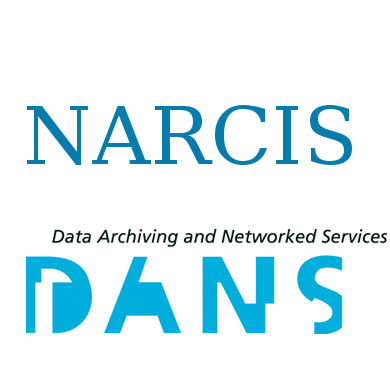Focal point
Location
National Academic Research and Collaborations Information System (NARCIS) is the main Dutch national portal for those looking for information about researchers and their work. NARCIS aggregates data from around 30 institutional repositories. Besides researchers, NARCIS is also used by students, journalists and people working in educational and government institutions as well as the business sector.
NARCIS provides access to scientific information, including (open access) publications from the repositories of all the Dutch universities, KNAW, NWO and a number of research institutes, datasets from some data archives as well as descriptions of research projects, researchers and research institutes.
This means that NARCIS cannot be used as an entry point to access complete overviews of publications of researchers (yet). However, there are more institutions that make all their scientific publications accessible via NARCIS. By doing so, it will become possible to create much more complete publication lists of researchers.
In 2004, the development of NARCIS started as a cooperation project of KNAW Research Information, NWO, VSNU and METIS, as part of the development of services within the DARE programme of SURFfoundation. This project resulted in the NARCIS portal, in which the DAREnet service was incorporated in January 2007. NARCIS has been part of DANS since 2011.
DANS - Data Archiving and Networked Services - is the Netherlands Institute for permanent access to digital research resources. DANS encourages researchers to make their digital research data and related outputs Findable, Accessible, Interoperable and Reusable.
Members:
Resources
Displaying 816 - 820 of 1863Socio-economic assessment of two small-scale irrigation schemes in Adami Tullu Jido Kombolcha Woreda, Central Rift Valley of Ethiopia
The sustainability of irrigated agriculture is questioned and the challenge is to increase simultaneously land and water productivity in the face of the limited availability of land and water in the CRV, the Central Rift Valley. The aim of this research is to assess the social-economic performance of two communitybased small-scale irrigation schemes in Adami Tullu Jido Kombolcha Woreda (ATJK) and to identify options to improve irrigation performance and resource management
Valuation of land use in the Netherlands and British Columbia: a spatial hedonic GIS-based approach
The main reason for government intervention in land markets is market failure. Open space is a non-market output or externality of farmland and, although it might be important to people, there is no actual market for the good as such. The Netherlands and the Province of British Columbia in Canada both experience similar problems of expanding cities and pressure on open space, and they both use zoning to regulate land use and its externalities.
The rules of the game and the game of the rules : normalization and resistance in Andean water control
cum laude graduation (with distinction)
Van praktijk naar praktijk : kennis voor Project Ontwikkeling Militaire Terreinen
Dienst Landelijk Gebied staat voor de taak om 53 voormalige militaire terreinen terug te geven aan de natuur, al dan niet in combinatie met andere functies. In deze studie wordt het planproces van vier gebieden beschreven, waar ook sprake was van het teruggeven van (niet agrarisch) gebied aan de natuur. Dat zijn: Vliegbasis Soesterberg, Bedrijventerrein Renkums Beekdal, Groei en krimp Veluwe, Pompstation Castricum
Worlds apart : interactions between local initiatives and established policy
This thesis presents three case studies about private actors aspiring to realize their innovative ideas on land management and design in three different areas in the Netherlands. In appearance, these three areas are very different but they are all dynamic and are all located near cities. In size, the areas range from seventy to a few hundred hectares. Socially, they are highly dynamic as well, with various groups and organizations seeking either to make changes or to conserve what they value, and taking action to promote their ideas.


